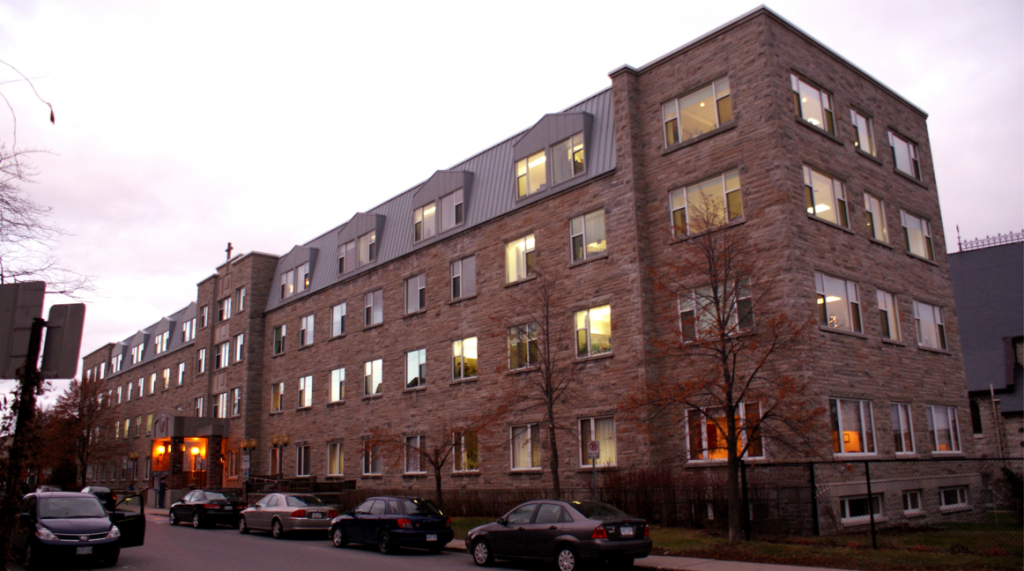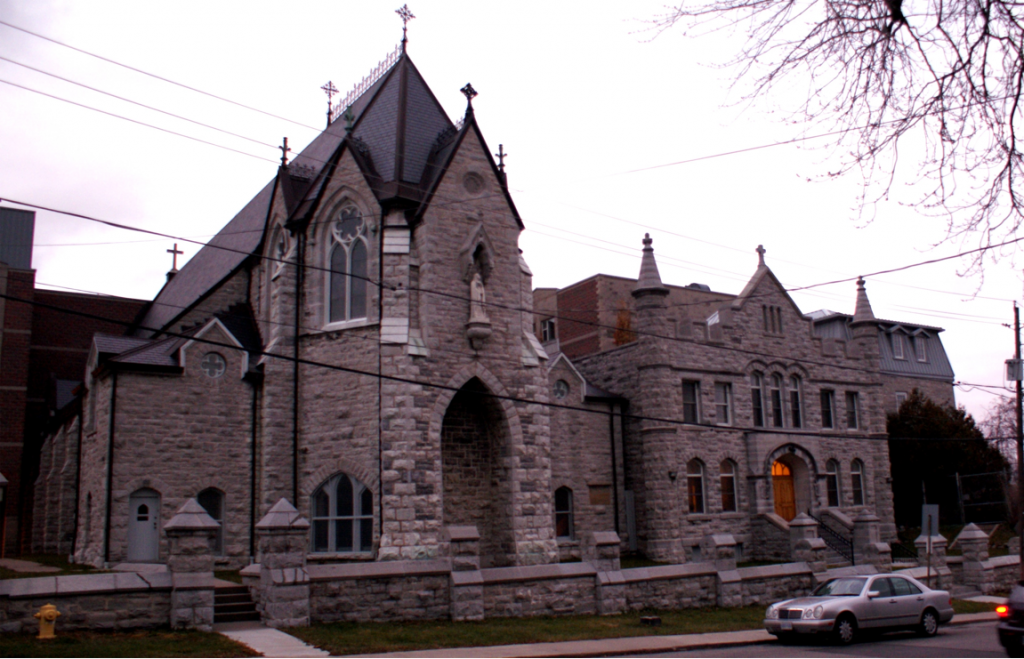Period: 1850-1900
In 1861, Bishop Edward Horan decided that Kingston needed a place for the old, the poor, the neglected, and the orphaned of his flock to stay and be taken care of. The Bishop set his sights on the Daughters of Mother Gamelin, also known as the Sisters of Providence, who had established a Providence Asile for the poor and neglected in Montreal. Bishop Horan requested that at least three or four Sisters be sent to Kingston from the Mother House to establish a similar foundation to that of Montreal, and, after much debate, the Mother Superior of Montreal acquiesced his request. It was decided that four Sisters would travel to Kingston, accompanied by the Mother Superior to establish the new mission in December of that same year. The four Sisters who were chosen for the mission were the following: Sister Mary of the Blessed Sacrament (who would become the Mother Superior and was French Canadian), Sister Mary Andrew (who was also French Canadian), and Sisters Mary Anselm and Mary of Mount Carmel (both of whom were of Irish descent).
Upon their arrival in Kingston the next day, the group of women were greeted by Bishop Horan who then took them to their new living quarters, a house on the corner of Montreal and Ordnance Streets. Within a week of their arrival, the Sisters had already received four orphans, and that number had grown to ten by the end of the second week following their arrival. The Sisters also visited the sick in their homes, as well as female convicts at the Kingston Penitentiary to give them lessons and comfort them. In March of the next year, the House of Providence was ready to open its doors to candidates, the first two of whom were Kingston natives, Catherine McKinley and Anne O’Reilly. The House of Providence was deemed too small within its second year of existence, and an adjoining house was purchased to be converted into an orphanage named St. Joseph’s Asylum.
As alms were the only source of income for the Sisters and their House, times were often tough and food was often scarce. Luckily, the Kingston community generously made donations to the foundation, especially around Christmas time. The rest of the year, however, the Sisters had to more or less depend solely on the collection of alms to get food on the table for their wards. The collection of alms was the most arduous task of the Sisters, much worse than caring for the sick and the needy, as they had to travel sometimes for hours into the rural areas of the region during the winter and fall (because this was the time of year during which the men of the town had free time to drive the Sisters in their carts). Luckily, in 1865, a Mr. James Harty helped the Sisters in receiving a government grant for their good work in Kingston, as well as providing them with a significant amount of food for Christmas time.
1866 brought with it the Sisters’ most difficult trial to date: their Mother Superior, at the young age of 36, died in October of that year. Though this was an extremely trying time for the Sisters of Providence, their numbers were growing as well, so much so, in fact, that by 1867 there were too many Sisters for the accommodations provided for them six years earlier. It was therefore required for the Sisters to build a new Home for the Aged and Infirm. It took a number of years for the funds for this new Home to be raised, which they eventually were by means of begging and a bazaar organized in Kingston in 1871. Unfortunately, before the construction of the new Home could start, the Sisters and the other inhabitants of the House of Providence had to move out of the House into the building of the recently-closed Regiopolis College (now part of Hotel Dieu Hospital) during the cold months of winter of 1871. By October, however, the construction of the new Home was completed, and, with the help of the Sisters themselves, it was opened in only two months later, in December, just in time for the ten-year anniversary of the arrival of the Sisters in Kingston.
More additions to the main building had to be made in the decades following, owing to the increasing number of orphans and infirm in Kingston. The first of these was St. James’ Wing, built in 1892. Then came St. Joseph’s Wing, erected just two years later. In 1898, the House’s own chapel, Our Mother of Sorrows, was finished. Even with the added space, however, there was still not enough room to house all of the orphans that were being brought to the doors of the House of Providence. The Sisters therefore bought St. Mary’s of the Lake, previously owned by the Sisters of the Congregation of Notre Dame, in 1904, but it was not until 1910 that the new orphanage and novitiate was able to be opened. The novitiate did not last long in the new building, and soon moved back to the House of Providence. The orphanage remained in St. Mary’s of the Lake, and in 1930 a new wing was built to accommodate the growing number of orphans. That same year, the Sisters of Providence found a new place to move their Mother House and their novitiate to, as the House of Providence was once again becoming overcrowded. This new property, known as Heathfield, was located on the outskirts of the city, and is still the current location of the Providence Mother House. The Sisters moved in in December 1930, and immediately plans were made for an additional building to be built on the property grounds: the Chapel of the Immaculate Conception was opened less than two years later, in July 1932.
The end of the 1930s was marked by a decline in the number of orphans in the orphanage at St. Mary’s of the Lake, partly due to the fact that it was decided by Social Welfare authorities that orphans would be better adjusted to society if cared for in foster or adoptive homes, rather than in orphanages. In 1939, all the orphans left in the building were transferred to the Mother House, because the onset of World War II meant that St. Mary’s of the Lake was requisitioned by the Department of National Defense to be transformed into a wartime hospital. The building, equipped with medical equipment during the War, was returned to the Sisters in 1946, who deemed it impractical to attempt to reconvert it into an orphanage and instead decided to keep it running as a hospital for the chronically ill. The building still serves that purpose, and it still stands today. It has seen a number of expansions since the end of the War, and is now known as Providence Care.



